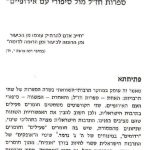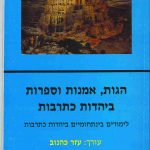One must refrain from ugliness
And from what is ugliness-like,
And from what is in its likeliness.
(BaMidbar Raba 10:8)
This article compares two corpora of folktales in Israeli culture – early rabbinical texts and European folktales.
The article presents major examples of folktales of ugliness, and the attitude towards ugliness in both corpora, and analyses them in various manners (philosophical, gender-wise, anthropological).
What does ugliness stands for? Does it implies a certain essence? What is its place in the world? How can you tell spmething is ugly? etc.
Author
Marianna Ruah-Midbar
Links
For the webpage of the anthology in which this article was included on Google Books, click here.
Year
2007
Language
Hebrew
Academic/Non-academic
Academic item
Bibliographical citation
Ruah-Midbar, Marianna, “The Attitude towards Ugly People in Israeli Culture in Light of its Sources – Early Rabbinic Literature versus European Folktales”, in Thought, Art and Literature in Judaism as Culture (Interdisciplinary Studies in Judaism as a Culture), edited by Ezer Cahanov. Tel Aviv: Yaron Golan (Achva Academic College and Judaism as Culture Library), 2007. pp. 113-152. [Hebrew]







